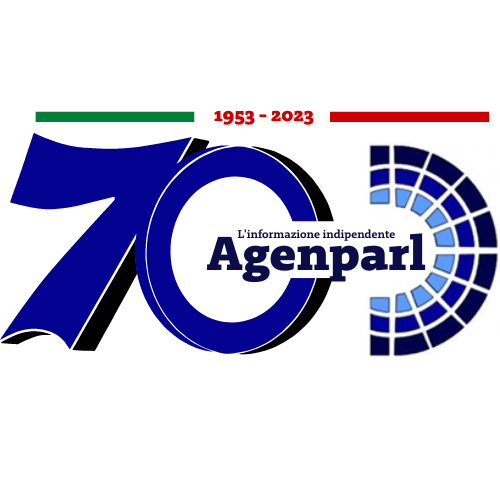 (AGENPARL) - Roma, 6 Giugno 2025
(AGENPARL) - Roma, 6 Giugno 2025(AGENPARL) – Fri 06 June 2025 A weekly compendium of media reports on science and technology achievements
at Lawrence Livermore National Laboratory. Though the Laboratory reviews
items for overall accuracy, the reporting organizations are responsible for
the content in the links below.
LLNL Report, June 6, 2025
LLNL technicians Gage Holcomb (left) and Raymond Lagoc service an El Capitan
compute blade. (Credit: Garry McLeod/LLNL)
Competition coming for El Capitan
https://www.nytimes.com/2025/05/29/technology/energy-department-supercomputer-ai.html
On Thursday, the Department of Energy’s Lawrence Berkeley National
Laboratory said it had selected Dell Technologies to deliver its next
flagship supercomputer, named Doudna, in 2026.
Supercomputers — which are computing systems that take up entire rooms
first used for jobs like designing weapons and cracking codes — have long
been symbols for national prowess in technology.
The Energy Department, which typically purchases the government’s biggest
computers, devoted $1.8 billion over eight years to reach what the industry
calls “exascale” performance, topped by a $600 million supercomputer at
Lawrence Livermore National Laboratory called El Capitan.
Chris Wright, secretary of energy, who has compared A.I.’s development to
the Manhattan Project, called the Doudna machine a key tool for winning the
global A.I. race in remarks prepared for a Thursday event in Berkeley to
announce the system.
Read More
https://www.nytimes.com/2025/05/29/technology/energy-department-supercomputer-ai.html
Although Lawrence Livermore National Laboratory’s main campus fits into a
one-square-mile footprint, the Laboratory has an outsized impact on national
security concerns such as nuclear proliferation, terrorism and energy
security.
Significant science in Livermore
https://www.independentnews.com/news/livermore_news/mayor-highlights-scientific-achievements-budget-success-quality-of-life-in-livermore/article_6c4b569c-def3-444c-bb93-2b87ff759fb8.html
Mayor John Marchand celebrated Livermore’s historic past and facts that
support a prosperous future during the annual State of the City Address on
May 22 at Garre Winery.
The mayor began by highlighting the city’s significant contributions to
science, particularly through the achievements of the Lawrence Livermore
National Laboratory (LLNL).
In 2012, Livermore became the sixth city in history to have an element named
after it, with Livermorium now included in the Periodic Table of Elements. In
2022, the National Ignition Facility at LLNL achieved a historic milestone by
becoming the first facility in the world to reach fusion ignition. This year,
El Capitan, located in Livermore, was declared the fastest supercomputer on
Earth.
“Livermorium, fusion ignition and El Capitan — three of the most
significant achievements in the history of humankind … and all have been
recognized during my tenure as mayor,” Marchand said. “The great thing
about that is that I had nothing to do with any of them, but I can still
associate my name with all of them.”
Read More
https://www.independentnews.com/news/livermore_news/mayor-highlights-scientific-achievements-budget-success-quality-of-life-in-livermore/article_6c4b569c-def3-444c-bb93-2b87ff759fb8.html
The location of a magnitude 3.9 earthquake in the East Bay hills near Dublin.
The red line is the approximate path of the fiber used in the distributed
acoustic sensing experiment.
A window into Earth’s crust
The technology used to measure and monitor earthquakes has remained largely
unchanged over the past century, but a breakthrough from Lawrence Livermore
National Laboratory utilizing telecommunication lines as earthquake sensors
has given researchers a magnified window into the Earth’s crust.
The instrument that makes it possible, known as an interrogator, enables
seismic researchers to effectively hijack fiber optic cables for use as
thousands of seismometers, providing a reading of quakes that is 1,000 times
more detailed than current seismometers in place across the Bay Area — and
which may help prepare for future earthquakes and identify hidden faultlines.
“Traditionally, seismologists put sensors in the ground. You have to dig a
hole or build a structure for it to couple it with the earth,” Lawrence
Livermore National Laboratory researcher Gene Ichinose said. “(But) you
have limited resources, so you can’t buy too many of them, and it’s hard
to get access into populated areas.”
Read More
Deputy Director for Science and Technology Pat Falcone (right) attends a
University of California/LLNL joint workshop on AI safety. (Photo: Randy
Wong/LLNL)
Pat Falcone receives AI Honor
The Washington AI Network hosted the inaugural AI Honors — Washington’s
first official black-tie gala celebrating the promise, power and people of
artificial intelligence — on Tuesday, June 3, 2025. The event brought
together influential voices in AI, from policymakers and senior officials to
tech executives, researchers and global thought leaders.
Happening alongside the 2025 SCSP AI+ Expo, which attracted more than 13,000
attendees in 2024, the AI Honors highlighted the progress of AI and its
transformative impact and showcased America’s leadership. The awards
ceremony recognized the groundbreaking individuals and organizations
propelling AI technology into the future.
Honorees included Patricia K. Falcone, Ph.D., deputy director for science and
technology at Lawrence Livermore National Laboratory, recipient of the AI
Honors in Public Science Award.
“This is a pivotal moment for AI and for American competitiveness,” said
Tammy Haddad, founder of the Washington AI Network. “The AI Honors are
designed to recognize the people and ideas driving meaningful progress —
and to connect leaders from across the ecosystem in a setting worthy of the
moment.”
Read More
Quantum mechanics simulations reveal the impact of temperature on energy
conversion efficiency in electrochemical cells. (Image: Liam Krauss/LLNL
Grand Challenge Graphics Support)
Hot temps make leaky fuel cells
Hydrogen fuel cells are often called the clean energy solution of tomorrow
— powering everything from cars to homes with just hydrogen and oxygen
while leaving behind only water. But a new study has revealed a surprising
flaw that could be slowing down that future: a hidden energy leak that kicks
in when things heat up.
Researchers at Lawrence Livermore National Laboratory (LLNL) took a closer
look at a popular fuel cell material called barium zirconate. It’s commonly
used in high-temperature fuel cells, which convert hydrogen into electricity
with little to no pollution. These types of fuel cells are exciting because
they can outperform traditional gas-powered engines — but only if they run
efficiently.
Here’s the catch: The scientists found that when the fuel cells heat up past
600 Kelvin (about 620 degrees Fahrenheit), they start leaking energy. And not
just a little. Their simulations showed that high temperatures cause tiny
vibrations inside the material’s atomic structure — and those vibrations
push electrons out of place.
Read More
——————————————————————————
Founded in 1952, Lawrence Livermore National Laboratory https://www.llnl.gov
provides solutions to our nation’s most important national security
challenges through innovative science, engineering and technology. Lawrence
Livermore National Laboratory is managed by Lawrence Livermore National
Security, LLC for the U.S. Department of Energy’s National Nuclear Security
Administration.
Read previous Lab Report articles online https://www.llnl.gov/news/lab-report
Unsubscribe from this newsletter
